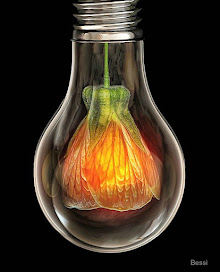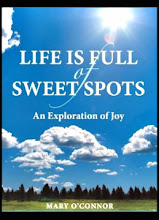I was five years old when I received a pair of red shoes the color of candy apples. The undyed leather soles were perfectly stitched and smelled like singed salt on a hot pretzel from a food cart vendor on Fordham Road. Inside each shoe was a rubber arch called a cookie that the salesman at Foot Adductor glued beneath the insole. The cookie was the same color as a pencil eraser, but it wasn't as soft. I didn't know what flat feet were and remember feeling somewhat perplexed because ducks had flat feet and I wasn't a duck. I also wondered why someone would put something called a "cookie" inside your shoe that you couldn't eat.
I must have looked at a lot of sidewalks when I was five because whenever I recall this time in my life, all I can see are those new red shoes. One foot in front of the other, moving slowly at first, then picking up the pace while holding hands with a grown up. I remember the asphalt blurring beneath my feet when Dad and I had to run under the elevated train tracks to cross the street in order to make the light or avoid pigeon dropings on our weekly trips to Weber's Bakery.
There were times the sidewalk seemed to move like a conveyor belt. When you're little you can't look over the crowds and figure out how you're going to get where you're going. That's a grownup's job. I'd look left and right when something caught my eye, but most of the time I marveled at my feet and the magic of walking. From 191st Street to Jerome Avenue, under the IRT past Tru-Form Shoes and the florist. I skipped over sidewalk cracks and random black patches of old gum until the smell of Weber's Bakery stopped me in my tracks.
Once inside the bakery, a distinct mix of anise, cinnamon, lemon, orange and vanilla left me in a condition that is best described as "smellmatized." Loaves of fresh bread with light and dark caramel colored crusts were stacked behind the counter by the cash register. You could smell an occasional burst of caraway when a seeded loaf of rye bread was being sliced, but the aroma never asserted itself into the perfume of the bakery. It hovered over the bread slicer and quickly disappeared.
Each loaf of bread sold at Weber's was had a white piece of paper the size of a postage stamp affixed at the heel. It was marked with the symbol of the New York City bakers union. If you were ravenous when you arrived home and were quick to make a sandwich there was a good chance you'd eat the thin paper stamp without a care in the world (they were impossible to remove completely). One day archeologists will discover these stamps inside the stomachs of some of the biggest bread eaters in New York City.
There were four triple shelved cases of pastry that contained desserts inspired by France, Ireland, Italy and Eastern Europe, including a few cognates that made sense to bakers whose families had been in America long enough to assimilate new traditions. If you were a little kid you were surrounded by delicious at eye level. The experience was torture or resulted in a treat. The outcome depended on your parents.

It was Dad, me, my new red shoes and a scam I ran every time the two of us went to Weber's Bakery. I called it cookie face. It was a fun-loving game of food mischief with eleven distinct steps.
Step One:
Inhale at arrival.
Step Two:
Let Dad take a number so he can get a loaf of rye bread.
Step Three:
Smile at the mean looking lady with the hairnet who is wresting red and white striped bakery string to secure a box of pastry for a customer.
Step Four:
Look at shoes.
Step Five:
Walk up to cookie case.
Step Six:
Take a long deep breath.
Step Seven:
Look at cookies and then look at Dad (who always winks on cue at step seven).
Step Eight:
Look at mean lady with the hairnet and smile a little even though she scares you because her stone-faced demeanor makes it look like she doesn't have any lips.
Step Nine:
Look at cookie case and be sad.
Step Ten:
Look at the mean lady with the hairnet and smile a little longer even if she scares you more than the horror movies you watch on television despite being told not to do so.
Step Eleven:
There's no step eleven unless you goofed somewhere between one and ten. You receive a handful of colorful cookies wrapped in bakery tissue as a reward for being cute.
If the mean lady with the hairnet was extra careful when handing over the cookies it meant a rainbow bar or petit four was tucked inside. You'd smile, show the loot to your Dad, and say thank you to the scary lady who wasn't so scary when she smiled and gave you cookies.
We left the bakery with our respective edibles in tow. I skipped and stepped on cracks as I ate my reward, sharing some with my co-conspirator. When we were done Dad opened up the white wax paper bag with the sliced rye bread and we'd each take an end piece and gobble it up gleefully. Sometimes we didn't stop at the end piece and had a lot of explaining to do when we got home. It was funny for us, but not so funny for anyone who thought they were going to get a whole loaf of rye bread when we got home from Weber's.
Notes:
This story is dedicated to the memory of my father, Paul Krell, who taught me everything I know about how to enjoy life and food. He was born on May 1, 1927 in Brzeziny, Poland and died on May 30, 2009, in Bronx, New York. He was a Holocaust survivor and U.S. Army veteran.
Norm Berg was the head baker at Weber's Bakery in the Bronx when I was growing up. He and Stanley Ginsberg co-wrote Inside the Jewish Bakery just before Norm passed away. The book and errata are highly recommended as this is an historic account of bakery culture in New York. Stanley Ginsberg, a passionate baker, has authored a new book titled The Rye Baker: Classic Breads from Europe and America. It will be released in September 2016.
Norm Berg's son, Nathan Berg, was the baker at Vandaag in NYC. I tasted breads he baked before the combination bakery and cafe closed in 2012. Some of the best bread I have ever tasted was made with Nathan's hands.
If you want to understand the role that bakeries played in Bronx culture (and NYC for that matter) pick up a copy of Inside My Father's Bakery by Marvin Korman. It should be a movie (note to Steven Spielberg and Dustin Hoffman).
Sidewalk Flowers is a wordless picture book for children by poet JohnArno Lawson and illustrator Sydney Smith. One of the most charming things about Sidewalk Flowers is how it illustrates father and daughter relationships. The image of the book cover accompanies this post. You don't have to be a kid to read this book. It's timeless and highly recommended, as is this promotional video for the book.
Image of needle tatted flower garland made from bakery twine by Jenny Doh. Used with permission.











